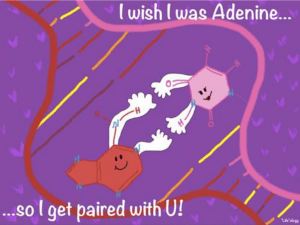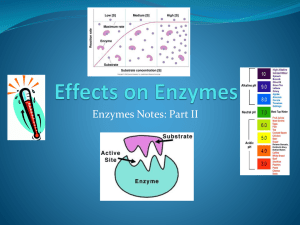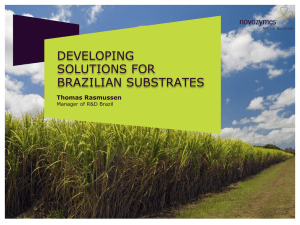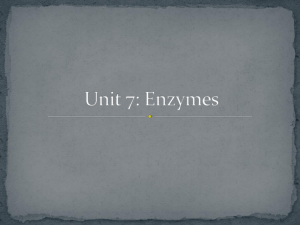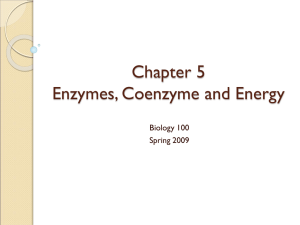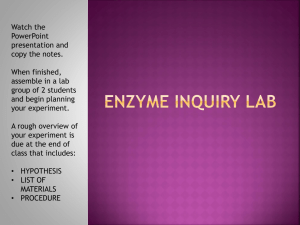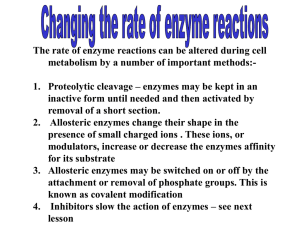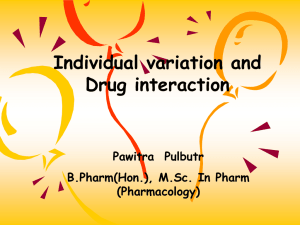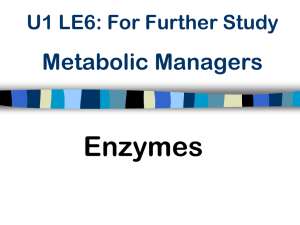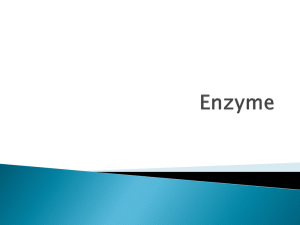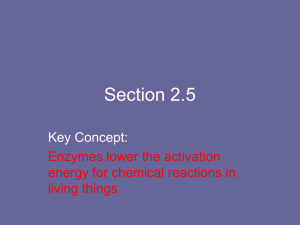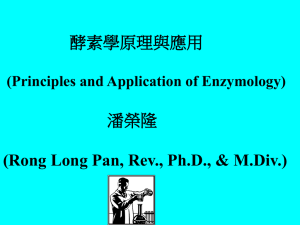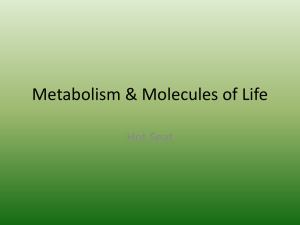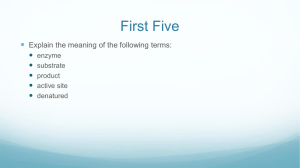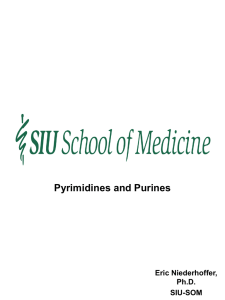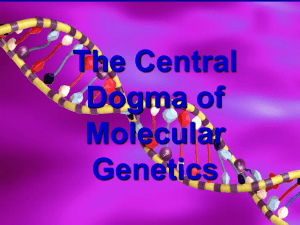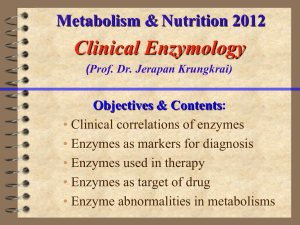Enzyme Introductory Lecture
advertisement
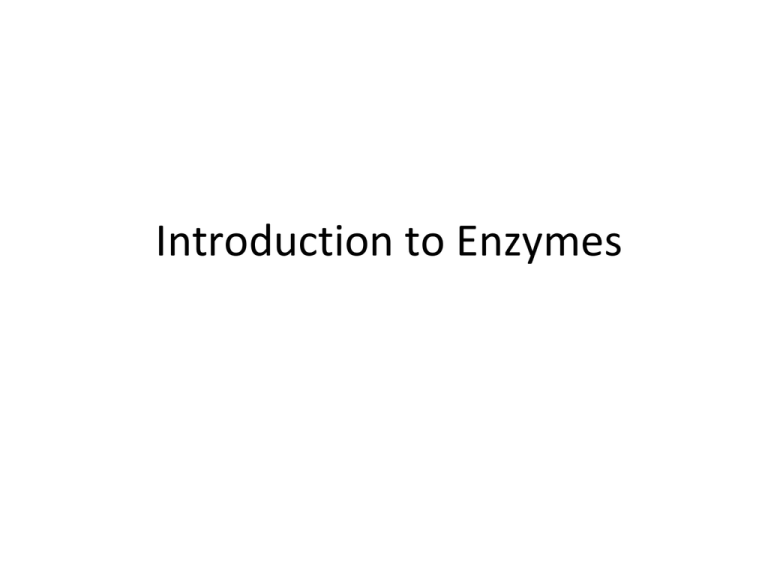
Introduction to Enzymes Review Macromolecules • Proteins amino acids • Carbohydrates sugars – (monosaccharides, polysaccharides, glucose) • Lipids fatty acids and a glycerol • Nucleotides nucleic acids Proteins • Chains of amino acids AA • Many proteins are enzymes • Enzymes catalyze chemical reactions AA AA AA A A AA Enzymes as catalysts • Catalyst - Speeds up chemical reactions in living organisms by decreasing the energy needed to start the Energy reaction (activation energy) Without a catalyst With a catalyst Time Definitions •Substrate- monomers that bind to the active site of an enzyme •Active site- area on enzyme where substrate binds •Product- what the enzyme produces Lock and Key Model Two substrates Enzyme Active site of the enzyme Lock and Key Model The substrates fit like a key in a lock Enzyme The active site is like a lock Lock and Key Model The activation energy for these substrates to bind together has been lowered by the enzyme. Chemical reaction!!! Enzyme Basic Enzyme Diagram The substrates have reacted and changed into the product Enzyme is unchanged Active site In Biology when a word ends in –ase it is more than likely it’s an enzyme. Guess what polymers are broken down by these enzymes and what monomers are created? Polymer Monomer •Protease ________ ___________ •Sucrase ________ ___________ •Lipase ________ ___________ Enzymes are very complex structures whose shapes and functions can be affected by many factors What factors affect enzyme function? pH Temperature Graphing enzyme activity Optimum Enzyme activity Denaturation: enzyme is ruined Increasing activity 20 30 40 50 Temperature (C) 60 The optimal temperature for this enzyme is __________ Optimum Enzyme activity Denaturation: enzyme is ruined Increasing activity 20 30 40 50 Temperature (C) 60


